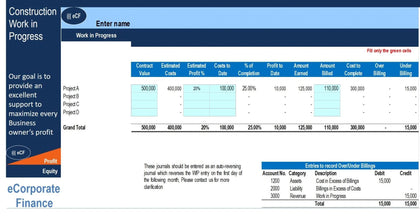Tangible Good Rental Business: 5-Year Startup Financial Model / DCF Analysis
Recent Upgrade: Integrated monthly and annual financial statements (IS,BS,CF) and cap table.
Logic added for frequency of units being rented out / returned and a cost is tied to that on a per category basis per unit.
It doesn't matter if your business is renting out furniture, equipment, party supplies, or what have you, this model was built for super granular configuration of what is purchased, and how much rental revenue it may bring in over time.
The user starts off defining the start year, exit year, and terminal value (based on trailing 12-month revenue from the exit month). If no exit is desired, that can be zeroed out. Funding sources (debt / equity) are also defined on the same 'control' tab.
The meat of this template is revenue assumptions. The user has up to 25 categories to fill out. Each category has up to seven separate tranches of purchases that can happen. Within each tranche, inputs are available for month of purchase, quantity of units purchased, and cost per unit.
On a per category level, there are assumptions to define the percentage of total units purchased that are actually rented out (utilization) and the average price charged per month per unit rented out. This will all function of an input of average working days per month. There is also an advanced input to account for the depletion of purchased inventory. This means over time the things you rent out are likely to deteriorate to some degree. For example, if you buy 10 chairs, it is possible only 8 or 9 are left after 3/4 years of time. This can be zeroed out if need be.
Two things happen when a purchase is configured:1. Rental revenue starts based on the unit count and all the above assumptions mentioned.2. Depreciation expense starts based on the defined useful life for each category.
Each purchase tranche within each of the 25 categories is treated as its own cohort (kind of like a SaaS cohort) and this enables advanced application of revenue and depreciation logic that is more accurate and granular.
There are a wide range of operation expense slots that can be configured over 5 years based on a given start month per slot and the total monthly cost per year. Other startup costs and CapEx have their own schedules.
The user will have a monthly and annual pro forma output that drives down to EBITDA, EBT, Net Income after Tax, and cash flow. Based on all the entered assumptions, a contribution and distribution schedule will populate that shows project level cash flows and a DCF Analysis. This also flows to investors and owners based on funding assumptions of the required equity to startup and survive. IRR, ROI, and equity multiple are also displayed for the project level and investor/owner pools.15 visualizations are included across this template to see advanced metrics and resulting financial summaries.

























































